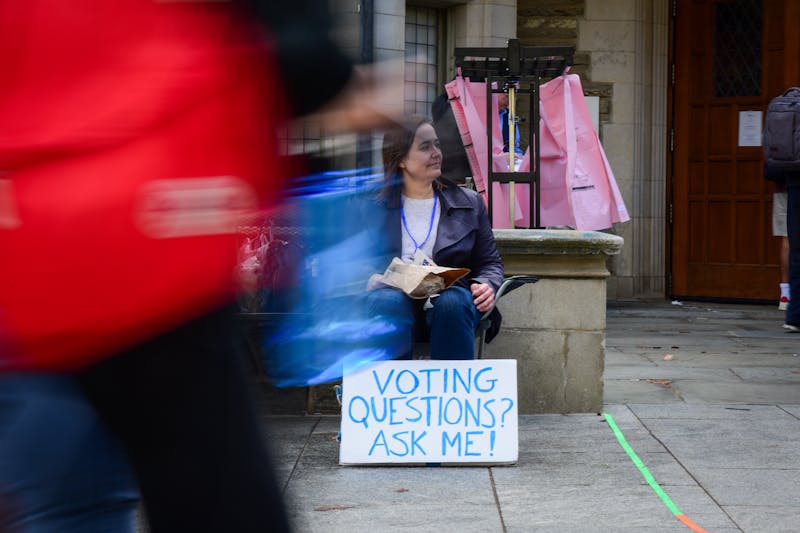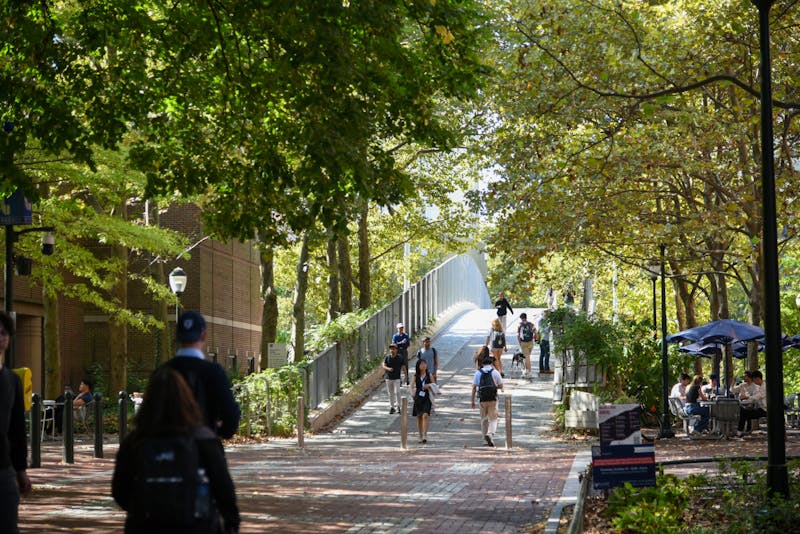The process was the most selective ever The University admitted 35 percent of early decision applicants this fall -- down from 52 percent last year -- making this the most selective early admissions process in Penn's history. Early applications increased by 26 percent, for a total of 2,040, according to Admissions Dean Lee Stetson. Only 714 students were accepted. And with the number of regular decision applications already up 10 percent, the trend does not seem to be waning. As the University becomes a more popular choice among high school seniors, the Admissions Office is able to defer more students than usual in order to compare them to the regular applicant pool. A total of 722 students were deferred, while 582 were rejected. Stetson added that he hopes to admit a smaller class this year -- another factor that led the office to accept fewer early decision applicants. Under the early decision process, students apply to the University in November and agree to attend if accepted. Since more students applied, Stetson said the quality of the pool was slightly lower. "[The students] were probably using the early application as an attempt to get an edge," Stetson said. "Penn is more sought after and there is a sense that we are more selective because our admission numbers have dropped." The average Scholastic Aptitude Test scores were 639 for the verbal section -- down from 645 -- and 670 for math -- down from 671. Accepted early applicants ranked, on average, in the 97th percentile of their class, jumping from last year's 95th percentile. The College of Arts and Sciences admitted 435 of the 1,294 students who applied and the School of Nursing accepted 22 of its 28 applicants. The Wharton School of Business accepted 183 of the 535 applicants and the School of Engineering and Applied Sciences admitted 74 of the 183 students who applied. Seven students were admitted to the Program of International Studies and Business and 14 were accepted to the Management and Technology program. For the first time ever, the University admitted more women than men, at 53 percent. Public school students make up 62 percent of the group already admitted and 26 students come from Philadelphia, Stetson said. Minorities comprise 22 percent of the admitted pool, with 112 Asians, 25 blacks, five Mexicans, 16 Hispanics and one Native American student. As in every other year, the majority of admitted students hail from New York, New Jersey and Pennsylvania, making up 57 percent of the early admitted pool. Eight percent of the students are from the Midwest, nine percent from New England, 10 percent are from the Western region and 13 percent come from the South Atlantic area. Admissions officers admitted 33 international students. After spending approximately two intense weeks reading applications, admissions officers spend an even more grueling two weeks in selection committee -- where each student's application is reviewed. Sequestered in committee for at least seven hours a day, five days a week, the officers discuss the applicants' potential to thrive at Penn, according to Regional Admissions Director Amy Calhoun. The regional officer who reads a particular student's application then explains any inconsistencies in the record. "In some ways, selection committee is the most fun part of the job, because it's the culmination of why you just spent seven, eight, nine weeks on the road," Calhoun said. "It's a sign that this is in fact a profession, and not just people willy-nilly making decisions."
The Daily Pennsylvanian is an independent, student-run newspaper. Please consider making a donation to support the coverage that shapes the University. Your generosity ensures a future of strong journalism at Penn.
DonatePlease note All comments are eligible for publication in The Daily Pennsylvanian.







